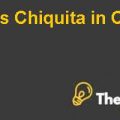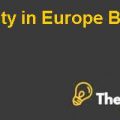
Arguments For and against unifying the two positions:
It is often easier for small companies to have CEO and Chairman as the same person. The reason behind this theory is that mostly the CEO of a company knows and has a better understanding for business and its operations. Further, the CEO of the company has a sound knowledge of the competitors and other external factors that may be an obstacle for the company. Further, unifying positions will help the CEO to make major strategic decisions for the company. On the other hand, as the company gets bigger; the responsibilities need to be broken so that problems can be handled properly. It is better for companies to break the management and board group so that the management people can be different with the strategic decision makers.
The basic objective of separating the position of CEO and Chairman is to make the board independent from the managerial decision making. Joining both roles will make the situation complex and this may raise conflicts with respect to both the managerial roles. Separating the role of CEO and Chairman will ensure that conflicts will not arise.
Recommendations for the Fiat Board of Directors:
After analyzing the offer made by Mr. Morchio and evaluating the pros and cons of unifying one position, the company should not accept the proposal given by Mr. Morchio as it will create more problems for the company. Further, it will be difficult for the company as this will give Mr. Morchio extra empowerment and if it is misused then it may create a lot of problems in the long run. In addition to that, it was the company’s tradition not to give full power to a single person. The immediate successor is young, but the company can train him and he will be ready to take charge of the position soon. Separating the role of Chairman and CEO will help Mr. Morchio by adding one more person that may help him to build the company stronger and stable.
History and important facts:
In 1899, the Deed of Incorporation was signed and that in turn gave birth to Societa Anonima Fabbrica Italiana Di Automobili Torino that is formally known as FIAT. Under the brand name of FIAT, the first car that was built was 4 HP. By 1902, the company progressed, and Giovanni Agnelli became the managing director of the company. Exactly after one year, in 1903, the company listed itself on the stock exchange. During the time, the company made progress and then in 1920, Giovanni Agnelli became the Chairman of Fiat Group. By the end of 1945, Senator Agnelli died and after him, Vittorio Valletta became the Chairman of the group. After coming into charge, he resumed large-scale production of cars. By 1966, after the passing of one generation, Giovanni Agnelli, the Grandson of Agnelli became the Chairman of the company. By the end of 1969, the company acquires Lancia and purchased 50% of Ferrari. By 1971, Abarth became a part of the Fiat group. After that, Alfa Romeo was added in the company’s products in 1984. In 2003, Giovanni Agnelli died, and his brother took the charge of chairmanship.
Corporate Governance Code:
The company as a whole group held and implemented a corporate governance code that has been issued for Italian listed companies that required Fiat group to make an annual report on the company’s corporate governance. The report contains all the details and information about the practices that have been followed in the Fiat group and the system that has been implemented in the company. It also contains information regarding adherence to the provisions of the corporate governance code and about the company’s ownership structure.
Management:
By evaluating the company’s operations, the Chief Executive Officer of the company is supported by group executive council of the company. GEC is the decision-making organization, and the body is led by the CEO of the company himself. The decision-making body is comprised of the main members from the operating division and the heads from other central functions as well.
Shareholder structure:
Giovanni Agnelli holds 30.47% of the share in the company. Black rock incorporation accounts for 3.10% share in the Fiat Group. On the other hand, institutional investors that are in the Euro zone hold 26.70% share in the overall structure. Moreover, institutional investors that is outside the Euro zone accounts for 11.63% share in the structure. Other investor accounts for 24.90% share in the group and Fiat SPA accounts for 3.20% in the overall shareholder structure..................................
This is just a sample partial case solution. Please place the order on the website to order your own originally done case solution.












